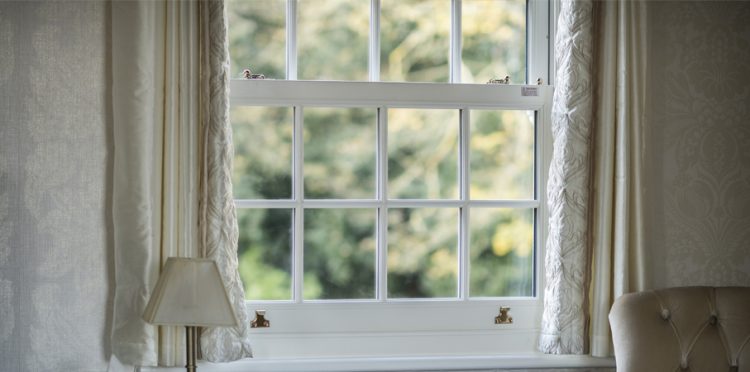
Aesthetics
How to clean sash windows & shutters
Sash windows and shutters are the perfect partners as they are both easy to clean but require a bit of loving, tender care to keep them looking at their best all year round.
The best thing about cleaning modern PVC-U sash windows is the tilt facility that enables safe cleaning from the inside. Some worry about dirt becoming lodged in the grain of foiled finishes, don’t be, foiled finishes actually wipe clean far easier than gloss PVC
Cleaning at frequent intervals helps preserve the original flawless condition. The frequency you’ll need to clean your new windows depends on where you live, town, city, country, and the exposure like salty air from the sea. Most people find it best to wipe the frames at the same time as having the glass cleaned
Here’s an example of how to best clean Bygone sash windows:
Clean the outside pane of the upper sash first. When complete, return the sash to a vertical position and then clean the inside pane. Apply the same procedure to the lower sash.
- Release the cam catch(es) which are on the top edge of the lower sash
- Lift the lower sash clear of the cill up-stand. Pull the tilt knobs towards the center of the sash (tilt knobs are generally located on the top of the bottom sash at either side).
- Gently pull the sash towards you, ensuring you take the weight of the sash until the tilt rest arms on each side, prevent the sash from lowering any more. It is then safe to leave it in this rested position until you have cleaned the outer face of the sash
- The top sash can be operated in the same manner once the bottom sash has been opened.
- Wipe over the plastic profiles with a damp cloth, working from the top of the top sash to the bottom of the bottom sash.
- Clean the glass using water-based glass cleaner or soapy water.
- Wipe the white rubber seal on the bottom of the bottom sash to maintain a good white finish.
- Ensure the drainage holes located on the bottom of each sash are clear to facilitate drainage.
- After cleaning, lift the sash back into position. Please ENSURE you hear the finger latches (at the side of each sash) CLICK into position, that way you know it is safe to reuse them sliding up and down. Failure to click the latches may allow the sash to drop inwards onto the safety stays.
Always use silicone spray or a beeswax polish to lubricate the sliding components. If the window starts to stick or squeak, NEVER use oil-based products.
The best chemicals to use to clean PVC-U:
The best method of cleaning is to use a clean cloth and a solution detergent such as Flash or Fairy liquid diluted to the normal concentration for floor cleaning or washing up.
If the surfaces are excessively dirty or unsightly and stains remain, then a mild non-scouring cream such as Cif can be applied.
NB: Avoid at all times solvent-based cleaners and abrasive materials because of scratching and especially the use of steel wool pads as these may cause permanent scratches.
Plantation wooden shutters:
The best way to start is by using the soft brush vacuum cleaner attachment and removing the initial build-up of dust and other household dirt.
Spray some wood polish on a clean dusting or microfiber cloth and dust each shutter individually. Should there be dust accumulated in the grooves, use a toothbrush sprayed with the wood polish to irritate and then remove stubborn dirt.
It is important to remember not to use water and soap to clean wooden shutters because this could cause damage to the wood.
Vinyl or painted shutters:
As with the wooden shutters, start the cleaning process by using the soft brush attachment on the vacuum cleaner for removing the excess dust and dirt.
Mix warm water and a solution detergent such as Fairy to form a foamy solution.
A toothbrush dipped back into the solution can be used to irritate and remove stubborn dirt from the grooves.
Dampen a cloth in the soapy solution and carefully wash the shutters removing all remaining dirt.
Using a new clean cloth dipped in freshwater only, rinse away any residue left by the cleaning liquid and water solution. Once complete use a dry towel to completely dry the shutters.
